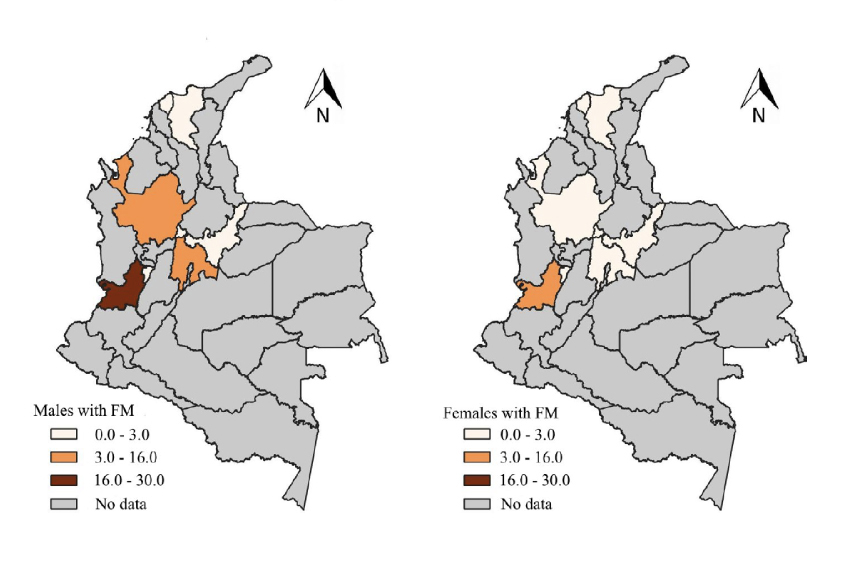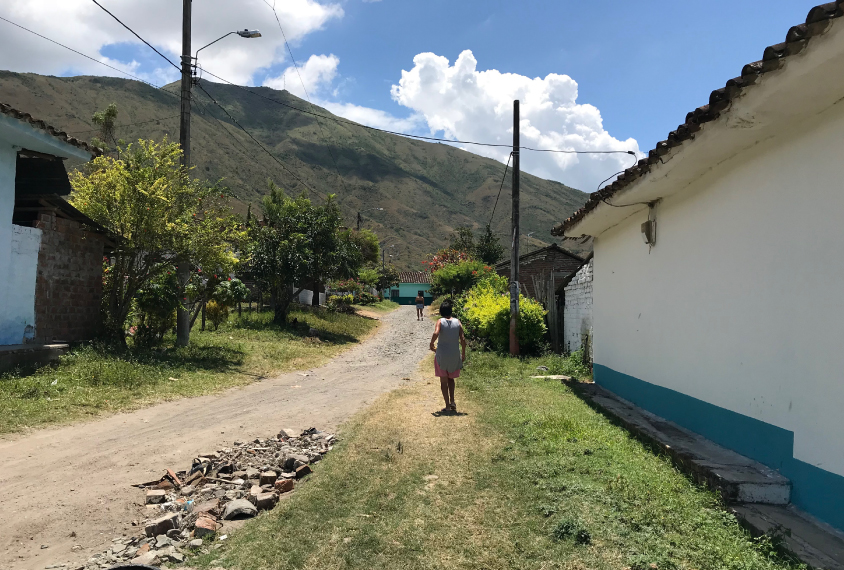People with fragile X syndrome in Colombia are diagnosed at age 27, on average, according to the first study to assess diagnosis in the country. By comparison, the average age of a fragile X diagnosis in the United States is about 3 years.
Fragile X syndrome is caused by a mutation in the gene FMR1 and is the leading cause of inherited intellectual disability. It also accounts for up to 5 percent of autism cases.
Clinicians diagnose fragile X using a DNA test: People with the condition have more than 200 DNA ‘letter’ repeats in FMR1. People with 55 to 200 repeats have a ‘premutation,’ associated with tremors and impaired coordination, primary ovarian insufficiency and some autism traits.
A lack of access to healthcare and genetic testing contributes to underdiagnosis in Colombia, says lead researcher Wilmar Saldarriaga-Gil, professor of medical genetics at Universidad del Valle in Cali, Colombia. This is especially true for people living in rural communities, where “there’s almost no access at all to genetic molecular testing.”
Although the findings are focused on Colombia, similar patterns may play out elsewhere, experts say.
“This is a good example of what’s probably going on in a lot of the world in countries where genetic testing is less developed,” says Elizabeth Berry-Kravis, professor of child neurology at Rush University Medical Center in Chicago, Illinois, who was not involved in this work.
Access issues:
Saldarriaga-Gil and his colleagues reviewed genetic-testing results, family histories and demographic data collected by the Colombian Fragile X Association and the University of California, Davis MIND Institute from 1993 to 2019. They found that 1,322 people had been tested for fragile X syndrome in the country: 91 had full mutations in FMR1 and 118 had premutations. The MIND Institute’s lab had identified about 73 percent of the group. Only 23 percent had been found by Colombia’s National Health System, and the remainder by Colombian universities.
The average age of diagnosis for people with the full mutation was about 27 years, but a major gulf emerged when the researchers accounted for health insurance. Colombia offers universal health insurance in which people who earn below minimum wage have subsidized coverage, and those who earn more pay into the system. People in the former group were diagnosed at an average age of 41 years, compared with 10 years for the latter. The work was published in the Journal of Applied Research in Intellectual Disabilities in February.
The gap is at least partially explained by the fact that people in Colombia face multiple barriers to testing, the team says. Few labs do molecular genetic tests, doctors have no clear guidance to test for fragile X and government insurance mandates a chain of subspecialist referrals before a test can be approved. For instance, a genetic test may not be covered before consultation with a geneticist or pediatric neurologist.
“Some families paid for the testing themselves,” says Ana María Cabal Herrera, a research assistant at Universidad del Valle who worked on the study. Among higher-income families who contribute to the healthcare system, referrals are still required for testing and services, but paying for their own testing can help get quicker government authorization for further care, she says.
People with low-prevalence ‘orphan’ conditions are guaranteed medical care and social protection by law in Colombia, but fragile X is not currently recognized as an orphan condition, despite fulfilling the inclusion criteria.
This study should help the Colombian Fragile X Association advocate more effectively for its inclusion, Cabal Herrera says. “This would strengthen the legal mechanisms they can use to ensure integral care and to guarantee the medical care and social protection they need.”

Rural life:
Fragile X syndrome is particularly common in Colombia. In the rural town of Ricaurte, the world’s largest known genetic cluster of the condition, 1 in 21 men and 1 in 49 women have a full mutation in FMR1; 1 in 71 men and 1 in 28 women have a premutation. By contrast, worldwide prevalence for people with the full mutation is about 1 in 5,000 men and 1 in 4,000 to 8,000 women.
Saldarriaga-Gil’s team has focused intently on Ricaurte for years. As part of that work, everyone in the community has had a genetic test, including older people who would have never been tested otherwise.
When the researchers removed Ricaurte’s population from the analysis, the national average age of diagnosis dropped to 10.73 years. But Ricaurte probably reflects the realities of other rural Colombian communities, Saldarriaga-Gil says.
In many cases, people with fragile X syndrome are well integrated into society in Ricaurte, living with their immediate families and doing farm work. The same is true for undiagnosed people living in some rural communities that Berry-Kravis has worked with in the U.S.
“They just kind of accepted the person and recognized what they couldn’t do,” she says. “The affected guys were all living at home and just staying with the family and doing whatever the family needed on the farm.”
But diagnosis opens the doors to therapies, and helps doctors know what to look out for in their patients with fragile X, says Julián Andrés Ramírez Cheyne, assistant professor of genetics at Universidad del Valle, who was not involved in this study. “The inadequate treatment of complications like seizures can produce more disabilities.”





